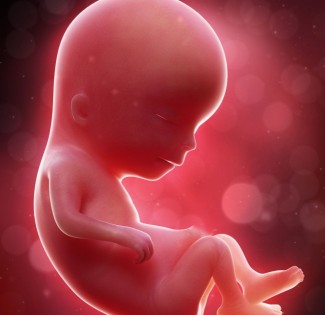Your baby is about the size of a lemon at 3.5 inches from head to bottom, and she weighs about 1.5 ounces. This little fetus is busy practicing straightening her body out while she can, and the kidneys, spleen, and liver are all functioning as they should. By week 14, the eyes are on the front of the face with closed lids, and the retinas are sensitive to light. The fetus will also be keeping warm with a protective layer of energy-producing brown fat and downy fur called "lanugo." If you are curious about the baby's gender, the genitals are still often hard to see on ultrasound, so don't be discouraged if you don't get any answers this week.
Amniocentesis
Around 14 to 16 weeks gestation, your doctor might discuss a type of diagnostic testing with you called Amniocentesis. Because this test carries a risk for miscarriage (1 in 200 or 1 in 400 depending on how often the facility does the test), your doctor will want to weigh the risks with the benefits before recommending this test. It is usually reserved for mothers of advanced maternal age (>35 Years) or women with other high-risk concerns. This test inserts a needle into the amniotic sac to withdraw amniotic fluid for genetic testing. An ultrasound is commonly used to help guide the needle into the sac where it is least likely to contact the baby. Test results are usually available within a few days or a week. Amniocentesis can detect chromosome abnormalities, neural tube defects, disorders like cystic fibrosis, and other things. While not a test for everyone, depending on your situation and other risk factors, it could be something to consider.
Reference Sources
- Mayo Clinic - Amniocentesis
- American Pregnancy Association - Amniocentesis


